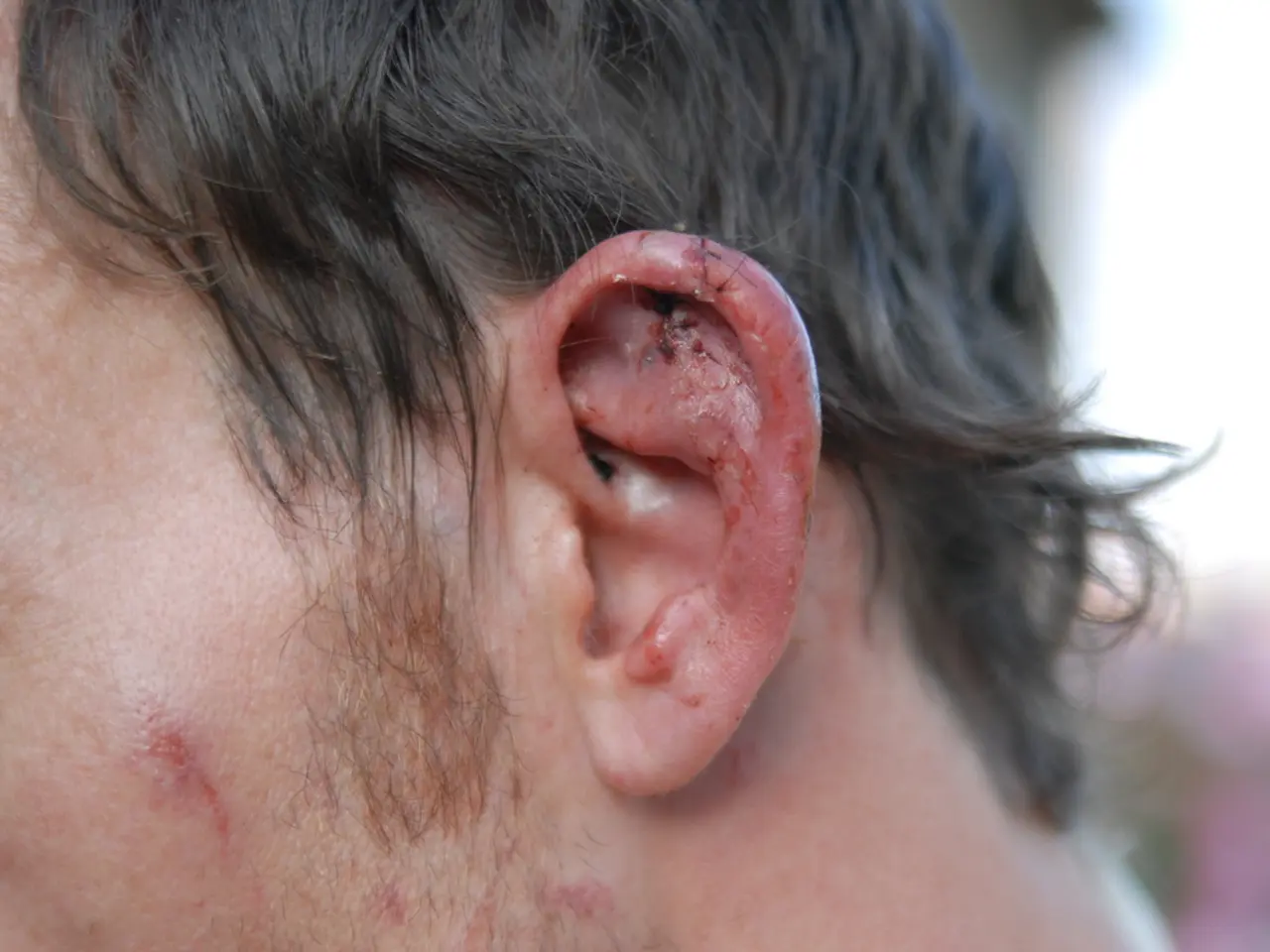Ear-specific pulsating ringing sounds: Origins, remedies, and additional insights
Unilateral pulsatile tinnitus, a rare form of tinnitus affecting approximately 1 out of every 10,000 adults, is often characterised by rhythmic noises in sync with a person's pulse, typically heard in one ear. This condition can be traced back to various vascular anomalies and related pathologies.
Common Causes of Unilateral Pulsatile Tinnitus
Some of the common causes of unilateral pulsatile tinnitus include:
- Sigmoid Sinus Wall Dehiscence (SSWD) or stenosis, which can lead to abnormal blood flow near the auditory apparatus.
- Carotid artery stenosis or other vascular occlusions, altering blood flow dynamics and potentially triggering neuroinflammation near auditory structures.
- Glomus jugulare tumors (paragangliomas), vascular tumors near the jugular bulb that press on vascular structures, causing pulsatile tinnitus.
- Other less common vascular malformations or arteriovenous fistulas can also cause unilateral pulsatile tinnitus by creating turbulent blood flow audible to the patient.
Diagnosis
Diagnosing unilateral pulsatile tinnitus involves several steps. Neuroimaging with MRI and CT scans, often with angiography, is used to identify vascular anomalies or tumors when unilateral or pulsatile tinnitus is present, especially if associated with neurological signs.
Evaluation for intracranial pressure abnormalities, which can be linked to pulsatile tinnitus associated with sigmoid sinus wall dehiscence, is also part of the diagnostic process. Audiologic testing to assess hearing function and cochleovestibular status is carried out given that unilateral tinnitus may be associated with subclinical cochlear or vestibular dysfunction.
Treatment
Treatment for unilateral pulsatile tinnitus depends on the underlying cause. Surgical excision, embolization, or radiotherapy may be employed for glomus jugulare tumors. Management of vascular stenosis or anomalies may involve stenting or other vascular interventions if significant and symptomatic. Treatment directed at intracranial hypertension is also considered if present. Supportive therapy and symptom management are provided for cases without surgically correctable causes.
In conclusion, unilateral pulsatile tinnitus is often related to vascular causes such as sigmoid sinus wall abnormalities or glomus tumors, diagnosed with imaging, and treated by targeted surgical or vascular interventions when indicated. Early diagnosis and appropriate treatment can significantly improve the quality of life for those affected by this condition.
- The unusual occurrence of unilateral pulsatile tinnitus can be linked to disorders like Sigmoid Sinus Wall Dehiscence (SSWD) or stenosis, which can disrupt blood flow near the auditory apparatus.
- Another possible culprit is carotid artery stenosis or other vascular occlusions, altering blood flow dynamics and potentially leading to neuroinflammation close to auditory structures.
- Additionally, glomus jugulare tumors, vascular tumors near the jugular bulb, can put pressure on vascular structures to initiate pulsatile tinnitus.
- Less common vascular malformations or arteriovenous fistulas can also generate unilateral pulsatile tinnitus by creating turbulent blood flow audible to the patient.
- The diagnostic process for unilateral pulsatile tinnitus involves neuroimaging, evaluation for intracranial pressure abnormalities, audiologic testing, and other tests to identify underlying causes.
- Depending on the diagnosis, treatment might include surgical excision, embolization, radiotherapy, stenting, or other vascular interventions for conditions like glomus jugulare tumors or vascular stenosis or anomalies.




